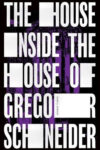The following is from the latest issue of the Full Stop Quarterly. You can purchase the issue here or subscribe at our Patreon page.
You find them in every British town or city. The faceless brute, the concrete monolith: stark, colossal structures so singularly unpopular with the public that their merits seem to be evident only to the architectural elect. The rest of us, meanwhile, are doomed to a sense of awe and mystified fascination when we look upon these curios of the mid-twentieth century, but also, perhaps, a sense of frustration.
For my own part, I will always interpret buildings as a dweller rather than a designer, a layman barred from the secrets of the sacristy. Having grown up in the countryside and moved to the city of Manchester as a university student, a lively, eclectic place where the blood-brown husks of old factories rubbed shoulders with Catholic churches and the glassy façades of office blocks, I acquired an interest in the built environment at precisely the point it became too late to study it for my degree. Confined to an amateur appreciation, then, I developed an understanding of the importance of architectural design not through sheaves of theory or academic catechism, but by observing and moving among these enchanting, breath-taking buildings.
After graduating, I did not opt to take my master’s degree in architecture, but I did choose to pursue it in one of the architectural Meccas of the country, if not the world. Oxford, the “city of dreaming spires” (in Matthew Arnold’s parlance), in which “nowhere else are art and life so exquisitely blended” (in Oscar Wilde’s), was a far cry from the rugged alleys and abandoned factories of Manchester. My college was Mansfield, a late Victorian sandstone affair tucked quietly away behind the city center, and on my way there from the cramped basement in which I was living I would pass pebbledash terraces, the medieval towers of the central colleges, the pastel-coloured houses of Holywell Street, the quirky, elliptically shaped University Club—an ecumenical collection of buildings from different styles and centuries which nonetheless coexisted in architectural harmony, united by that blend of art and life, of form and function, which Wilde had observed a hundred years ago. It was the same harmony that had struck me in Manchester, where the complicity of gothic low-rises and modern skyscrapers conferred not just a pretty face but also a vibrant backbone to the city.
Ornament and incident are especially important to the aesthetics of construction, and with few exceptions every architectural style has sought to acknowledge and exemplify this. Whether it’s the sōrin of a Japanese pagoda, or the acroterion of a Gothic rooftop, these decorations supply a certain dignity to their buildings which transcends mere utility, bestowing them with intrinsic value, as Roger Scruton noted in his introductory treatise on the philosophy of beauty. If “all art is quite useless” (Wilde, again), then the uselessness of ornamentation is what helps to define these styles as “art”, as things worth seeing as well as using. On the way home from seminars, my friend and I would spend the journey pointing out, with childish delight, the opulent porticoes, the stained-glass casements of a secular building, the bold thrust of a bartizan—all the useless but decorative additions to the houses we passed, which animated and adorned those weekly excursions. We would usually part company at St. Antony’s, my friend’s college, but not before she would bring to my attention one final specimen at the forefront of the institution: the Hilda Besse Building.
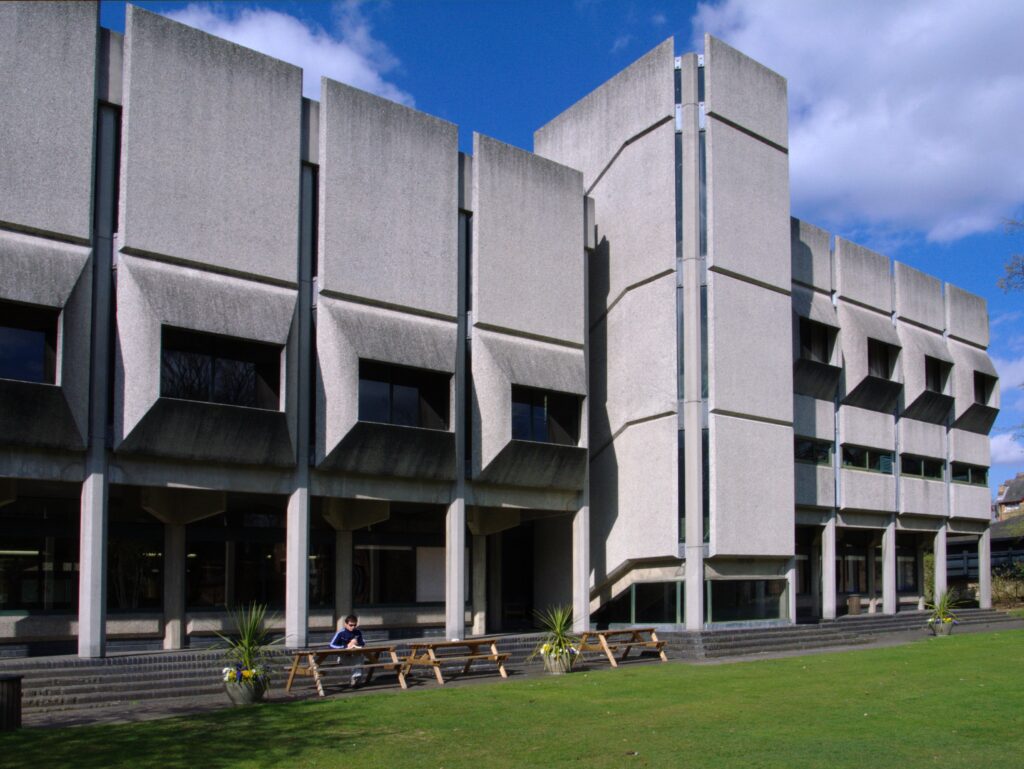
There was little need to point it out in the first place, as there was little chance I could have missed it. This sprawling block of concrete, comically propped up on needle-thin pilotis, seemed to be standing guard at the gates like some cold, chthonic sentinel, behind which the façades of the chapel and the dormitories peered sheepishly. No ornamentation here; only a beige, brick-shaped edifice punctuated by square windows set at regular intervals. I was not alone in feeling intimidated. My friend informed me that the building was more or less unanimously disliked, but that it had recently been given a Grade II listing, a legal protection granted in England to buildings “of special interest, warranting every effort to preserve [them].” I revile iconoclasm, but it was striking to see this gargantuan structure, itself so redolent of some gruff bodyguard for the prettier buildings, granted immunity on grounds of “special interest,” when in Manchester I had witnessed the demolition of entire blocks of buildings which, while undoubtedly expensive to maintain, were seen by many as integral to the community and identity of the city. But perhaps what most disturbed me about Miss Besse was the jarring degree to which she stood out from her surroundings. Hers was not the aberrance of a shy, schoolground pariah, but of the hulking bully who sends her peers into hiding.
In his study on the Brutalist movement in Britain, Alexander Clement remarks how architects “had the difficult task of working their Brutalist profiles into a geography crammed with history and tradition. One must not forget, though, that the sprawling campuses of Cambridge and Oxford had taken hundreds of years to develop and grow, evolving through many stylistic periods. Modernism, therefore, was simply the next period style and so should not have been any more incongruous than Neo-classicism was along with Gothic.” Clement’s use of words is telling, for even if, following one theoretical axis, Brutalism should not have been incongruous, one cannot help but notice that it was (and is). It may be true that to most onlookers, the uninitiated vulgate to which I myself belong, “old” buildings seem to lie abreast of one another in the vague unity of “the past,” regardless of whether they were erected in the nineteenth century or the ninth. But even Oxford’s newer buildings, such as the Blavatnik School of Government and the aforementioned University Club, have succeeded in complementing their ancient neighbours, while preserving the city’s reputation as a site of renewal and innovation.
It is true that if you glance at a historical timeline of architectural styles, Brutalism appears as just another period, another -ism, one of a number of short-lived spawns from the abundant brood of modernism, nestled tightly between its less successful sisters, such as Bauhaus and the fantasies of Archigram. But stepping back from this one-dimensional perspective, and observing how Brutalism looks not as a name on a graph but as a structure in reality, one cannot help but notice that there is something patently ahistorical about this architectural style. Shamelessly naked and unabashedly flat, it neither honours its predecessors, as baroque did with classical, or as Edwardian did with baroque; nor does it even attempt the smallest of leaps towards a hypothetical future, as its contemporaries ‘Googie’ and Metabolism did with their audacious, sci-fi-inspired shapes and elaborate patterning. Brutalism’s essential emptiness gives it the appearance of something that could have been built by anyone at any point in history, and yet which is still awaiting a makeover. Even the Romans were not averse to building purely functional structures out of pure concrete.
In short, the Brutalist style is both a temporal and architectural curiosity, at once a definitively historical phenomenon—having been born on the back of the Second World War, but barely surviving its Cold successor—and at the same time deliberately ahistorical. Whereas traditional and revivalist buildings attempted to fit in with their surroundings, and expressionist structures attempted to ask fresh and often complex questions, Brutalism seems, with its lack of detail, only to be attempting to deflect attention from itself. And yet its very starkness, its uniqueness, and its persistence within the urban landscape of Britain should warrant our attention; for behind the plain, concrete face, there are a myriad of forces at play.
Glass and Concrete: The History of Brutalism
Much like any old building, it is impossible to appreciate Brutalism in its entirety, and within its wider context, without taking a few steps back. From such a distance, Hilda Besse and her concrete kin appear not in the midst of an Oxford college but along a row of similar buildings, each one influencing the next. But step back again, and you’ll see that Brute Street is only one of many roads, replete with turns and intersections, in the sprawling and ever-expanding metropolis that is—or was—modernism.
By “modernism,” I don’t mean only its architectural manifestations (although they can certainly claim a district for themselves). Rather, I refer to the broader cultural and political current which rose around the fin de siècle, flooded through the next few decades and swept well into the latter half of the twentieth century. Its products range from Picasso’s Guernica and Gaudi’s Casa Balló to women’s suffrage and the writings of the Oulipo Group. It is, for this reason, a usually redundant definition, and even when confined to the field of “art” (another elusive term; another essay), the word “modern” carries so many connotations on its shoulders that it would break under their weight, were it not for its nonpareil strength as a signifier for a certain cultural, political and technological rupture with the past. It is in this sense, then, that Brutalism—although late to the party—epitomizes the spirit of modernism at its extreme: a rejection not only of the past, but of history itself.
Hence another, crucial way in which Brutalism marked a departure from its predecessors. More practical than, say, baroque or rococo, it was nonetheless influenced by ideology as much as functionality, in largely the same way that the opulence of St. Peter’s Basilica was chiefly a reaction against the drab austerity of Protestant architecture. But the ideological components of modernism were an altogether different stroke from the religious gasconading of the Renaissance, or even the ordered purity of the Enlightenment. This is, after all, the era of Husserl and Heidegger, of Sartre and Merleau-Ponty, in which the notion of subjectivity began to gain traction beyond the pages of philosophy books. In other words, if previous architectural styles had sought to impose a particular impression or perspective on their viewers, modernism now asked the viewer to interpret buildings in their own way.
We see this shift most clearly in the realm of modern art. Paintings such as Dalí’s The Persistence of Memory or those of Jackson Pollock, and even sculptures such as Duchamp’s Fountain, have no clear message or purpose. Instead of providing answers, they ask us questions. “How does this make you feel?” “What does this remind you of?” “Can you make sense of what you see?” This reflective, provocative facet of modern art engenders a reversal of traditional artistic values, in which the intensity of detail adds more to a painting or statue, in which quantity broadly corresponds with quality. By way of contrast, the “emptier” a work of modern art, at least on a superficial level, the more valuable it is on a cerebral level, since the range of hermeneutical possibilities is greater. Is the fountain really a fountain, or a urinal—or something else?
Architecture, which has economic, social, and local factors to contend with alongside the aesthetic, has a harder time being employed to phenomenological ends. But absence of detail is just as important a feature of modern architecture as it is of modern art, and again the reason is one of maximising the medium’s interpretative potential. The difference is that while modern art asks to be interpreted in different frames of thought, modern architecture asks to be interpreted without a frame, as an isolated phenomenon without the burden of location or context, as equally capable of serving its purpose in the center of Oxford as in the suburbs of Buenos Aires. Thus, the first truly “modern” style of architecture became known as the “International Style,” so called on account of its immanent malleability, its utterly neutral appearance. The International Style achieved immense success in exhibitions, such as the Paris and Barcelona Expos in the twenties. These were crucibles of experimental architecture where factors such as the local environment or neighbouring buildings were considered irrelevant to the structure itself. Often the designs were conceived in a vacuum and only then consigned a place in which to be built—Le Corbusier’s Villa Savoyebeing a case in point. Here, the Swiss architect responded to the request to build a country home for the Savoye family by designing a manor in which each of his famous “five points” would be put into effect: the employment of pilotis; long, uninterrupted windows; a roof garden; a free façade; and a free interior plan. As a pre-designed structure set in the Poissy countryside, the Villa Savoye does little to blend in with its surroundings.
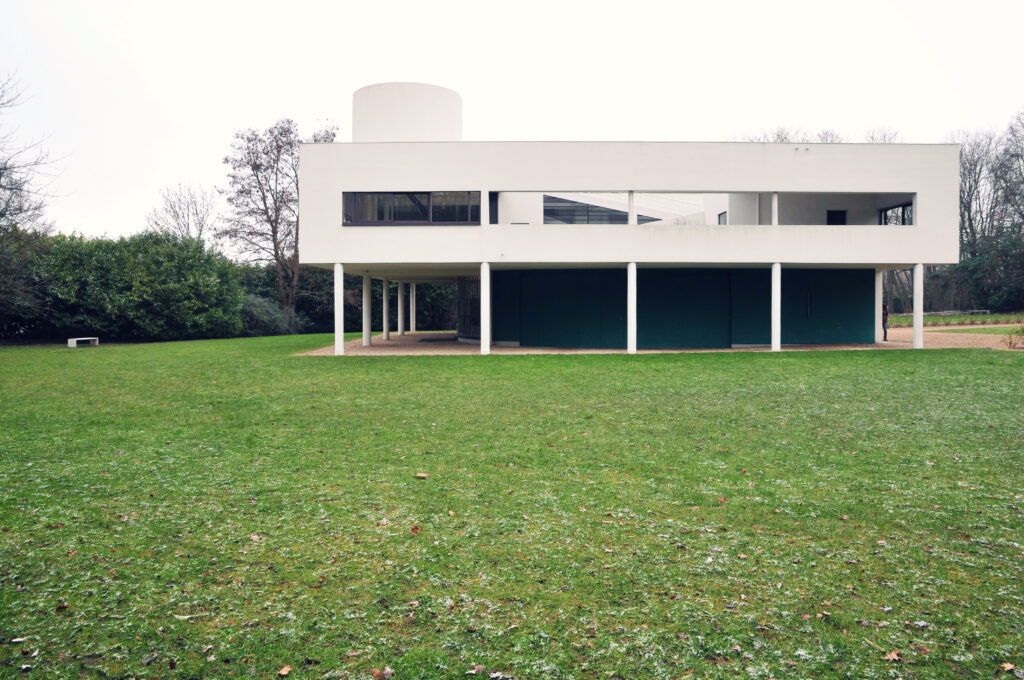
Few however can look at the buildings of Le Corbusier, or Walter Gropius, or Frank Lloyd Wright, and confidently claim that aesthetics have not been taken into consideration. Indeed, the facelessness of the International Style was integral to its ethic, a feature intended to encourage “free design,” in Le Corbusier’s terms, allowing for further detail to be added according to the owner’s preferences, or alternatively to be appreciated in its own right, as a space safe from the intensity of artistic attention. In tempering its abstract tendencies with the odd splash of colour, with extraneous grooves and recesses, or blank stretches of roof or wall which nonetheless followed eye-catching shapes (Le Corbusier’s Notre-Dame-du-Haut and Chandigarh Palace of Assembly being yet more cases in point), the architectonics of the International Style shied away from extremism and found a fresh, dynamic balance between form and function.
Where Brutalism differs from the International Style is in its imbalance, in the precedence of function over form, which became a maxim among the more utilitarian modern architects, following Louis Sullivan’s ethic in designing skyscrapers. Defined in this way, it becomes easier than many critics have found it to identify the first truly Brutalist building, especially when we confine our search to Britain where, as we shall see, the style took on a flavour—or flavourlessness—of its own. While Le Corbusier’s Unité d’habitation in Marseilles certainly gestured towards an approaching aesthetic, London’s Royal Festival Hall, built in 1951, arguably marked the inception of vast but simple concrete structures as an independent style. The project was still criticised for its lack of décor, hence the cladding of Hadene marble and Portland stone, though even from a short distance the façades appear bereft of detail or any kind of pattern, an effect only emphasized by the single strip of windows. In principle, then, the design is unabashedly Corbusian, with the crucial difference being one of material. Where the architects of the International Style employed glass and brick, steel and stucco in their designs, the Royal Festival Hall was almost exclusively a work of concrete, both internally and externally. Standing beside the London Eye and Shakespeare’s Globe Theatre, and looking out over the river to the Houses of Parliament, the nakedness of this structure is even more apparent.
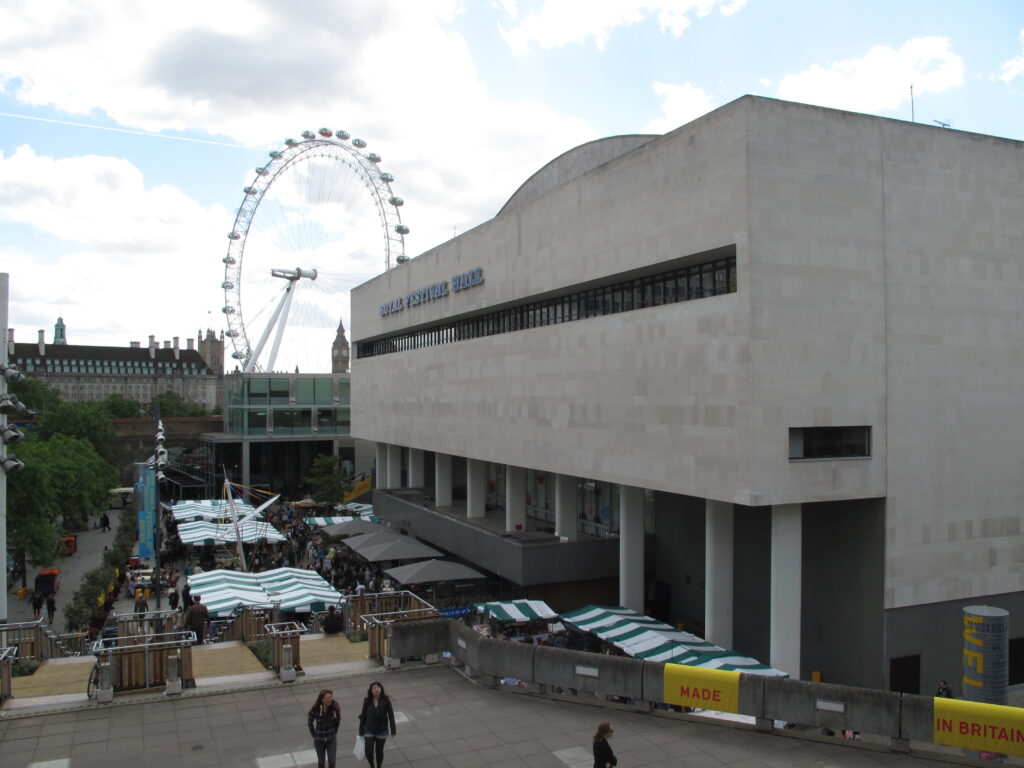
The term “Brutalism” itself can arguably be traced back further than this. In 1950 the Swedish architect Hans Asplund used the term Nybrutalism (New Brutalism) to describe his Villa Göth, a stocky, red-brick residence, whose like can be found everywhere now in the European landscape. The term had different connotations when applied to modernism’s concrete manifestations, however, etymologising from the French bréton brut (raw concrete). It was anglicized in 1966 by Raymond Banham, in his book The New Brutalism: Ethic or Aesthetic?, to refer to a movement already well under way, and from then on, like wet concrete, or like the Brutalist buildings themselves, it stuck. It is easy to see why. The neologism combines the style’s material nature—brut (raw, crude)—with its aesthetic impression—brutal—and became popular even amongst the movement’s admirers. Attempts to rename the style (to ‘heroic’, for example) on account of its implied biases have failed—perhaps because these attempts also showed the ostensible impossibility of withholding judgement from the naming process—as have attempts to rename it according to a particular period or place (for the “International Style” already had the monopoly on that). But another, simpler reason is that “Brutalism” so adequately captures the synthesis of “raw” and “brutal,” which were to become defining features of the style inaugurated by the Royal Festival Hall.
As it turned out, this modernist contribution to the Thames overlook would sow the seeds for a new kind of architecture. If earlier buildings appeared to prefigure the Royal Festival Hall in their techniques, then the difference between the Hall and these buildings would nevertheless seem a lot greater when the Congress Housecame on the scene in 1957, or Manchester’s “Toastrack” in 1958. Materially and geometrically plain, these buildings were cut from the same clay (or concrete, rather) as the Royal Festival Hall. The inspiration was obvious, and a new style was beginning to form around the virtues of minimalism and unadulterated concrete, like electrons spinning around the nucleus of an atom. And like an atom, this initially miniscule movement underwent a massive explosion. Within years of the erection of these ur-Brutalist buildings, structures of the very same ilk began to spring up and sprawl across the towns and cities of Britain. Libraries, warehouses, schools, service stations, police stations; all manner of buildings, both public and private, were erected à la mode. And while not all of these buildings were built entirely of concrete, all concrete constructions from then on would come to be associated with Brutalism, whether deliberately or not.
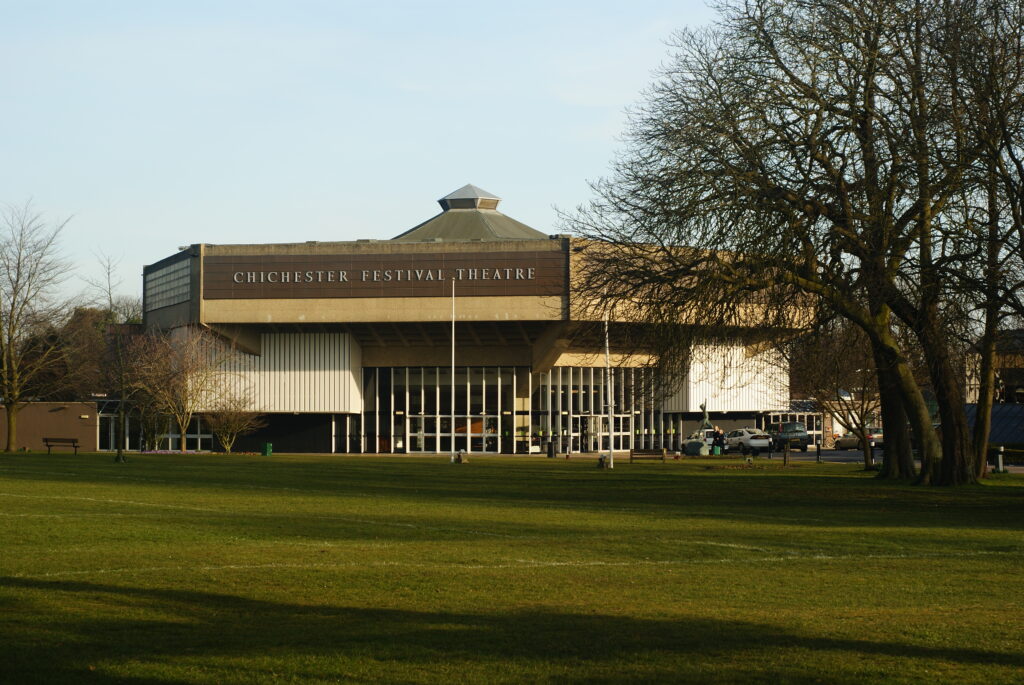
In some ways, then, Brutalism operated like any other fashion, gathering popularity amongst architects and council planners in the 1950s before petering out in the late 1970s. But such a surface-level view ignores the bigger picture and fails to identify why the movement was so ubiquitous and yet so short-lived. As we have seen, it is no coincidence that Brutalism’s apogee occurred when modernism was in full throttle, the very period which Hobsbawm christened the “Age of Extremes”: of mass warfare followed by fascism, of fascism followed by Communism, corresponding to the swings of a pendulum set in motion by the revolutions of the late eighteenth century, which gained pace with both world wars before threatening to fall off altogether in a haze of atomic destruction. Against this backdrop, Brutalism is not an isolated or spontaneous movement so much as a reaction against the most recent excesses of modernism, an emblem of a culture that was still reeling from various political ideologies that had reached their boiling point and begun to overspill, and was beginning to question the notion of “culture” itself. The belligerence of Nazi Germany and the tragedy of the Holocaust had shown the world how supposedly and traditionally noble values such as Heimat and patriotism could contain the seeds of unimaginable evil. The stewards of the cultural sphere were eager not to repeat those mistakes. “To write poetry after Auschwitz,” wrote the cultural theorist Theodor Adorno, “is barbaric.”
No wonder, then, that the ensuing period saw an attenuation of the art world, and the triumph of deconstructivist theories over formalism. And in the field of architecture we find perhaps the starkest examples of this. In Germany, the revivalist structures of Nazi rule were succeeded by distinctly modern buildings of Bauhaus design—and, of course, by Brutalism itself. But unlike Bauhaus, which is often considered specific to Germany, Brutalism was a truly global phenomenon, appearing on all continents, and especially in the USSR. Unlike Germany and Russia, however, Britain did not undergo the turmoil of a dictatorship, and even succeeded in avoiding the revolutions that characterised mainland Europe in the 19th century. As it stands, the historical anomaly of fascism was not enough to prompt the extremism of Brutalism. But it was helped along by the dire economic state that war, as a consequence of fascism, had nonetheless pushed Britain into.
This new, impoverished, post-war Britain was faced with the task of rebuilding itself in the spirit of victory at a time when its coffers were decimated and its debt levels had risen through the roof. The country had lost two thirds of its export market and a new period of austerity was just beginning. The obvious solution was to build as cheaply as possible, at the expense of other considerations, and councillors extended this strategy even to buildings of immense social importance, including London’s National Theatre, built beside the Royal Festival Hall. Brutalism thus appeared at a time of immense historical coincidence, for alongside this newfound frugality—and to some extent because of it—a new wave of avant-gardism, in the form of the countercultural revolution, was soon to wash over the country and the western world at large. The old order was fracturing, both socially and economically, and in its place a new one was awkwardly emerging. From the surge in “underground” literature and comix, to bands like The Beatles and The Rolling Stones, the (counter)cultural products of this period have been well documented, but it is perhaps in Brutalism that the alchemy of artistic revolution, unparalleled experimentation and unprecedented economic shock is most salient.
It is unsurprising, then, that as soon as these influences started to lift, the movement itself started to decline. For even during this prolonged episode of national penury—and to a large extent because of it—the British public craved luxury in the public sphere. By the sixties, architects were beginning to realize that even the tenants of affordable Brutalist social housing largely despised living in an architectural experiment which was shameless about its cheapness and prone to dilapidation, while in their public buildings they desired something that would lift their spirits and prettify the cityscape. Indeed, the desire for “useless” art as an essential aspect of social life provides us with one reason why in Britain the monarchy are most popular amongst the working classes. “This is one of the great functions of a royal court”, as Leopold Kohr wrote in the late fifties, “as the British have so well demonstrated during the long years of unbroken austerity. Yet our embassy officials [were] raised on a different diet . . . never having experienced the emotional starvation that accompanies material misery.” Kohr’s observation applies just as well to the officials of the architectural world, and highlights the chasm in artistic values which in the post-war years separated the wealthy from the poor, the elite from the masses.
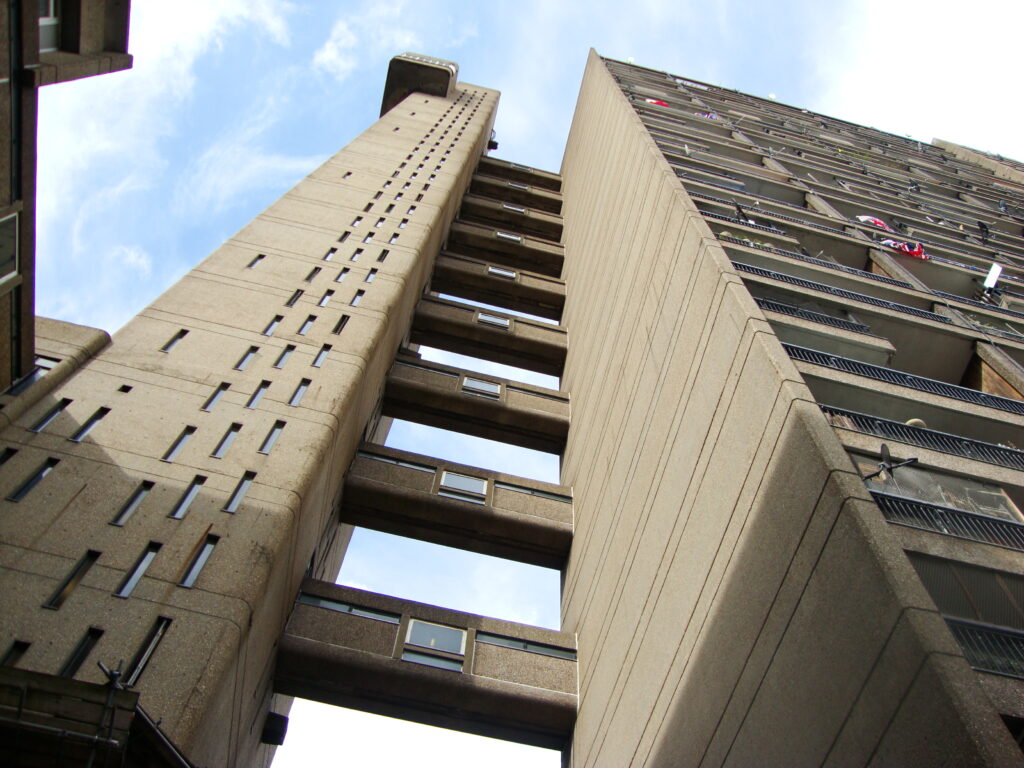
The British economy began to find its feet again in the eighties, and so too did the cultural sector experience a newfound sense of self-confidence, as the country underwent a musical, literary and cinematic boom. On the flipside, Brutalism’s encroaching obsolescence coincided with its falling out of fashion in the art world, sometimes only hanging on in a nefarious capacity. In films of the period, we see Brutalism employed as a backdrop for dystopian settings, as in Star Wars and A Clockwork Orange, or as the lairs for masterminding villains in the James Bond franchise. (Indeed, Fleming named his notorious Goldfinger after the architect responsible for Trellick tower in London.) Concrete was, of course, an economical choice for producers, but its ubiquity in certain genres tells us something about its sinister implications.
One explanation is Brutalism’s associations with the Soviet project. The style was hugely popular amongst architects in Russia and Eastern Europe, and its massive, unadorned edifices embodied the egalitarian and authoritarian strains of communism in equal measure. In this light, the demise of both appears intertwined. Like communism, Brutalism was indeed built for the masses; but like communism it was also rejected by them. If the fall of the Berlin Wall showed anything, it was that concrete was not as durable a material as it had initially seemed.
Et tu, Brute?: The Legacy of Brutalism
Architectural styles are often only identified in hindsight, and here Brutalism is, yet again, a strong example. But even so, the pioneers of architectural styles are those who set out to build their projects with a view to the future, and if they possess enough foresight to look beyond the lifespan of the style they have inaugurated, it is towards a posthumous movement which uses their own as a stepping stone, and progresses the values and ideals cemented in their own work. The fact that, after Brutalism, the dominant architectural styles regressed back into largely aesthetic considerations, and aspects such as geometrical complexity and the combination of materials returned to the fore, is something which we tend to take for granted, as if these elements of the craft never truly left. In other words, only now, fifty years after the formal end of the Brutalist movement, does it appear in the timeline of world architecture not so much as a stepping stone but as a stumbling block, an anomalous gap between the modern and the postmodern, which attracts the eyes of critics and laymen alike.
That is not to say that Brutalism came to a halt in the final quarter of the twentieth century. Rather, the style faded over time, while other styles—deconstructivism, neo-vernacular—became increasingly popular, until hardly any buildings at all that could reasonably be called ‘Brutalist’ were being built. For many, the interest is still there, though few councillors feel the need—let alone the desire—to commission buildings of the sort which the historian W. G. Hoskins dismissed as “councillors’ concrete.” Indeed, in Britain, the number of architects working under the jurisdiction of the council has dwindled significantly, from about 80 percent during the heyday of Brutalism to 1 percent in 2018, and even those architects employed by state or council have had difficulty persuading the latter of Brutalism’s merits.
But the interest, the fascination, indeed the culture of Brutalism have not disappeared entirely. As Owen Hatherley has put it, Brutalism has become in many ways a “coffee-table fetish object”, a remote and romantic artifact of the past. Yet in doing so, it has managed to ameliorate public distaste by finding a niche within the bookshelves of architects and historians alike. But it is difficult to see Brutalism, or any style similar in its steadfast loyalty to function over form, and in its outright dismissal of traditional aesthetic values, ever coming into vogue again without the convergence of calamities that engendered this truly brutal style in the first place. And until then, buildings like Hilda Besse, the Congress House and the Royal Festival Hall will live on. Only not as pointers to the future, but as monuments of the past.
Josh Allan lives in Oxford, where he received his MSt in World Literature. His work has appeared in The Oxford Review of Books, Eunoia Review, Undercurrent Philosophy, and World Literature Today.
This post may contain affiliate links.







